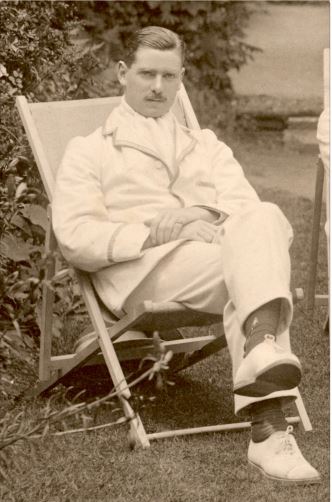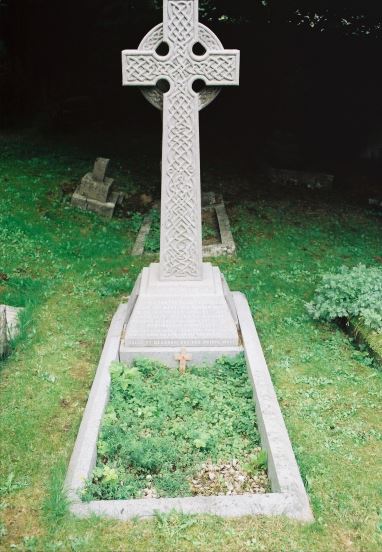1st Battalion, Border Regiment

James Travers Blount Dinwiddie was born on 25 April 1891 at Dumfries, Scotland. He was the son of James Blount and Agnes-Ellen Dinwiddie.
Prior to the war he was educated at Elizabeth College, Guernsey, followed by Pembroke College, Oxford, where he gained an honours degree in law. He was a keen rower and captain of the college boat club.
According to a report in the Gloucester Journal of 18 September 1915, at the outbreak of the Great War he was serving with the Transvaal Scottish and was in action in what was German South West Africa (now Namibia).
He returned to the UK in the autumn of 1914 and joined the 1st Battalion, Border Regiment. He was promoted to Lieutenant on 3 November 1914 and on 17 March 1915 he sailed with the battalion (87 Brigade, 29 Division), from Avonmouth, to join the Mediterranean Expeditionary Force. After arriving in Alexandria on 28 March, the battalion arrived at Mudros on 12 April, in readiness for the Gallipoli landings.
The 1st Borders landed on X Beach, in the Helles area, on 25 April 1915. The landing was barely opposed but once attempts were made to break out Turkish resistance soon stiffened: James suffered a gun shot wound to the buttock on 28 April 1915 and was evacuated to Mudros for treatment.
He returned to duty at the end of June and on 10 August 1915 took over as the officer commanding ‘D’ Company, having been promoted to Captain.
The British had landed at Suvla Bay, on 6 August 1915, in an effort to outflank the Turkish forces further south. Due to initial inertia little progress was made and on 17 August 29 Division was brought in as reinforcement. On 21 August the Division was given the task of attacking Scimitar Hill (also known as Hill 70) from Chocolate Hill. The attack featured a series of charges by various units and during one of these Captain Dinwiddie received a serious gun shot wound to the chest. All the officers of ‘D’ Company were wounded in that battle.
He was immediately evacuated to Mudros and on 23 August embarked for England aboard HMHS Arcadian. Upon arrival he was admitted to the Empire Hospital, Vincent Square, Westminster in Lo n d o n , where he died at 8 pm on 13 September 1915, age 24: a result of complications and an infection relating to his wounds. Posthumously he was Mentioned in Despatches, in the London Gazette of 28 January 1916.
His funeral was held at Amberley Church at 3pm on Thursday, 16 September 1915. He was buried in the churchyard; his grave being marked by a stone cross.

